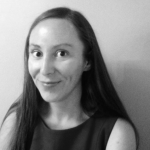Week 2: Applying for Artist Residencies Continued
Crafting Persuasive Applications: Tips & Advice
When applying for an artist residency, the process is pretty much the same no matter where you decide to apply. The following materials are usually required, and can be used and used again for future opportunities:
- Writing Sample (10 pages for poetry, 20-25 pages for prose)
- Project Proposal (usually 1 page)
- Resume/CV or biographical statement
- References (usually two or three)
When crafting an application, here are some tips:
- In general, the work sample should support the project proposal. One of the most common mistakes that individuals make when filling our residency application is presenting a work sample that seems disconnected from the proposed project. It’s helpful to remember that the purpose of the work sample is to show that you have the technical capability to carry out the proposed project. So if you’re proposing a sonnet sequence in the project proposal, show them a sonnet sequence in the work sample, etc.
- Present a concise, unified application. This is especially key with the work sample. Many writers make the mistake of trying to demonstrate their formal range in the work sample. It’s much better to present a unified set of poems, stories, paintings, etc. A concise body of work is easy for admissions committees to recall, which will certainly benefit you during the selection process.
- Show that you’ve researched the program. You can accomplish this by mentioning specific resources the program offers, as well as the location, size, or structure of the residency program. There’s nothing residency programs dread more than seeing an artist arrive, a look of horror cross her face, and the words, ” What?! I had no idea this program was located in rural Wyoming!”
- Don’t choose “traditional” work or “experimental” work based on what you think the admissions committee will like. Many individuals assume that if they’re applying to Yaddo or MacDowell, they should submit traditional work, since these are more established colonies. With that said, admissions committees at most residencies rotate so as to assure that a diverse range of aesthetics are represented. Simply send your best work, and the work that is most closely connected to your proposed project.
Reading Assignment
For this week, we’ll be looking at an “expert breakdown” of the application requirements, originally published in Poets & Writers Magazine. Hopefully this article will offer some insight as to how your general project proposal from last week might be customized for specific opportunities.
Applying to a Writers Residency: An Expert Breakdown of the Requirements
Also, you should know about Rate My Artist Residency, which contains lists of no application fee residencies, residency funding resources, and the programs rated highest based on artists’ experiences while in residence.
Optional Assignment: Submission Bombing
The following arts organizations have invited submissions from our class and very much look forward to hearing from you. There is no formal deadline, so feel free to revise your materials first based on peer and instructor feedback.
The Writers’ Colony at Dairy Hollow
 Kristina Marie Darling is the author of over twenty collections of poetry. Her awards include two Yaddo residencies, a Hawthornden Castle Fellowship, and a Visiting Artist Fellowship from the American Academy in Rome, as well as grants from the Whiting Foundation and Harvard University’s Kittredge Fund. She is currently working toward both a Ph.D. in English Literature at S.U.N.Y.-Buffalo and an M.F.A. in Poetry at New York University.
Kristina Marie Darling is the author of over twenty collections of poetry. Her awards include two Yaddo residencies, a Hawthornden Castle Fellowship, and a Visiting Artist Fellowship from the American Academy in Rome, as well as grants from the Whiting Foundation and Harvard University’s Kittredge Fund. She is currently working toward both a Ph.D. in English Literature at S.U.N.Y.-Buffalo and an M.F.A. in Poetry at New York University.
